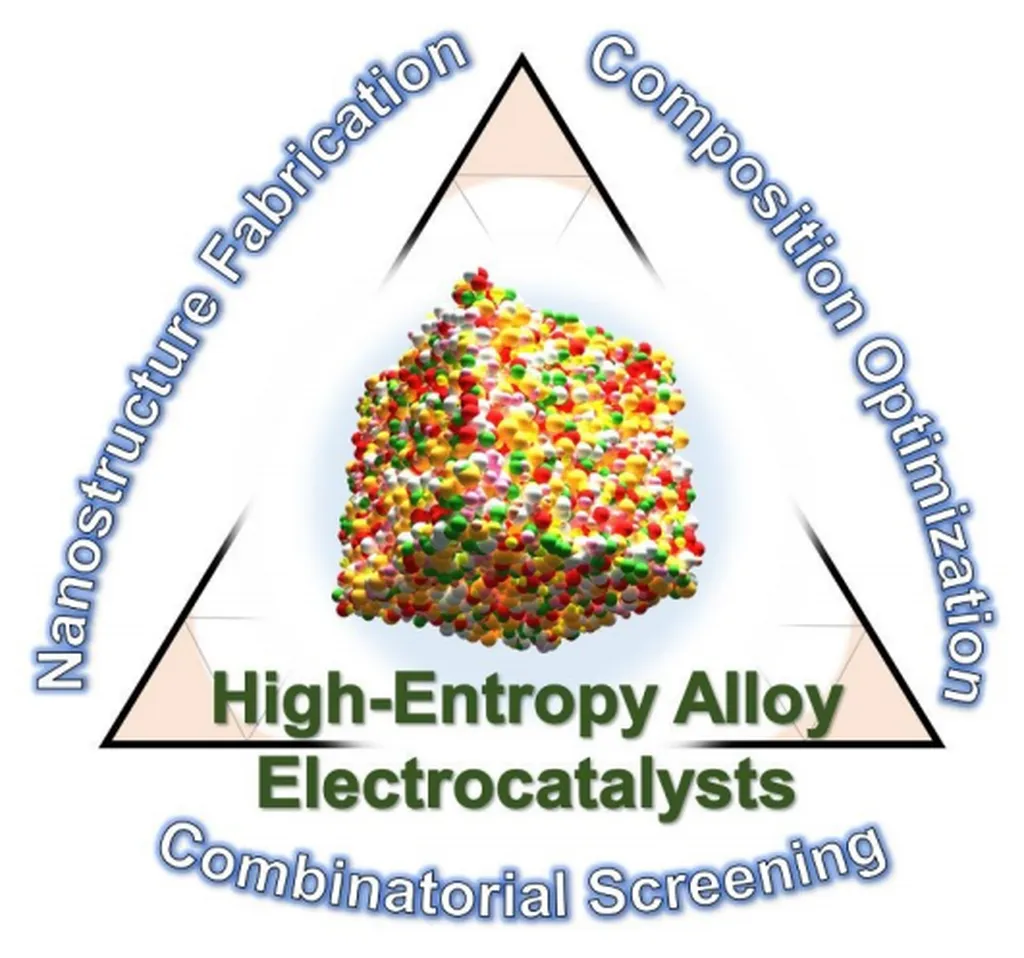In a groundbreaking development poised to revolutionize the energy sector, researchers have made significant strides in the field of nanocatalysis, offering a glimpse into the future of high-performance catalysts. The study, led by Wail Al Zoubi from the Integrated Materials Chemistry Laboratory at Yeungnam University in the Republic of Korea, introduces a novel approach to fabricating high-entropy alloy (HEA) nanoparticles that could transform the reduction of organic compounds.
High-entropy alloys, which are composed of near-equimolar amounts of four or more metal elements, have long been recognized for their potential to enhance catalytic properties. However, the challenge lies in creating well-defined, ultrastable supported HEAs that can deliver superior performance and stability. Al Zoubi and his team have tackled this issue head-on by developing a method to prepare PtPdInGaP@TiO2, a five-metal HEA nanoparticle, using ultrasonic-assisted coincident electro-oxidation–reduction precipitation (U-SEO-P).
The electronic structure and catalytic performance of these HEA nanoparticles were meticulously studied using hard scanning transmission electron microscopy (STEM), marking the first direct observation of the electronic structure of HEA nanoparticles. “This research takes an important step forward in fully describing individual HEA nanoparticles,” Al Zoubi explained. By combining STEM with deep learning techniques, specifically convolutional neural networks (CNN), the team was able to reveal significant aspects of the shape and size of these nanoparticles, which are crucial for their widespread and commercially important applications.
The implications of this research are far-reaching, particularly for the energy sector. The ability to detect and segment HEA nanoparticles with precision opens up new avenues for the development of high-performance catalysts. These catalysts could play a pivotal role in the reduction of organic compounds, a process that is essential for various industrial applications, including the production of fuels and chemicals.
The study, published in the journal ‘InfoMat’ (translated from Chinese as ‘Information Materials’), highlights the potential of combining advanced materials science with cutting-edge computational techniques. This synergy not only enhances our understanding of nanocatalysts but also paves the way for innovative solutions that can address the pressing needs of the energy industry.
As the world continues to seek sustainable and efficient energy solutions, the work of Al Zoubi and his team offers a promising path forward. By pushing the boundaries of what is possible in nanocatalysis, they are shaping the future of energy technology and setting the stage for a new era of high-performance catalysts. The research not only advances our scientific knowledge but also holds the potential to drive significant commercial impacts, making it a landmark study in the field.

